In my practice as a registered dietitian I want to discuss the differences between synbiotics, postbiotics, prebiotics, and MACs. Let’s discuss what they are and whether they have any health benefits!
What is a Synbiotic?
Hot topic alert – what is a ‘SYNBIOTIC’?
I’m seeing lots of Facebook ads for synbiotics, and many people assuming that synbiotics are ‘superior’ to probiotics so let’s clear things up!
Synbiotics are a combination of:
> Probiotics, which are live microbes
PLUS
> Prebiotics (essentially ‘fertilizer’ for the probiotics and microbes in your gut)
Synbiotics can be:
🤝Synergistic, meaning that they work together – the prebiotics feed those specific microbes to have benefit your health
OR they can be:
👯♀️Complementary, meaning both the prebiotic and probiotic have benefits but aren’t necessarily co-dependant on one another to work.
❗Why are synbiotics exciting? ❗
Think of prebiotics like a fertilizer. If we can ‘fertilize’ the probiotics, they may possibly have more benefit than if they didn’t get that ‘fertilizer’.
In fact, synbiotics are being researched in gut disorders, liver disease, and even improving the gut microbiomes of c-section infants!
🦠Should you take a synbiotic?🦠
At this point, I’d rather people get prebiotics (fibre!) to fuel the gut microbes they ALREADY have! You can get prebiotics in foods like:
> onion and garlic
> pulses (beans, peas, lentils)
> whole grains
> many cruciferous vegetables
> many nuts & seeds
If you can’t meet your fibre targets of 25-38 grams per day, fibre supplements may be appropriate to bridge that gap!
What are Prebiotics?
What are Prebiotics? 🤔
Prebiotics are beneficial compounds that act as food for your gut bacteria and can improve our health. Prebiotics are undigestible parts of food that reach the colon without being absorbed – while we can’t digest them, many times our microbes can!
Most prebiotics are fibres, however, there are some ‘candidate prebiotics’ that include things like omega-3’s, and even phytochemicals found in our foods!
I always say if you take care of your microbes, they will help take care of you, and we do this by way of prebiotics.
I like to encourage my patients to get a variety of prebiotic and ‘candidate’ prebiotic foods.
Examples of prebiotics include:
- 🍞 Whole wheat products
- 🥜 Pulses & legumes (think chickpeas, lentils, black beans etc.)
- 🍝 Whole grain pasta, rice, and potato (especially when cooked and then cooled, as resistant starch increases!)
- 🥣 Oats
- 🥜 Nuts & seeds
- 🍎 The skins of fruit and vegetables
- 🍌 Certain fruits and vegetables, like onion, garlic, artichoke, asparagus, beets, brussel sprouts, winter squash, cauliflower, celery, peas, dried fruits, unripened bananas
While we don’t have a target set for how much prebiotic fibre a person should get in a day, my philosophy is – if you focus on getting enough fibre, and variety – you’re probably doing a pretty good job!
What’s your favourite prebiotic food?
What about MACs compared to prebiotics?
MAC’s vs. Prebiotics – what’s the big diff? 🧐
Buzz-word alert – MAC’s are something you need to know about and are truly buzz-worthy in my opinion!
MAC’s or ‘microbiota accessible carbohydrates’ are becoming a hot topic, alongside prebiotics. I have a logic puzzle for you.
All prebiotics are MAC’s, but not all MAC’s are prebiotics. Why?
Simply because the definition of prebiotic is VERY specific. A prebiotic is a substrate that is SELECTIVELY utilized by our gut microbes to confer a health benefit. Thing of prebiotics a special dish on the menu ONLY for VIP’s – very specific microbes in the gut.
What are MACs?
MAC’s are a bit more broad – they don’t selectively feed one kind of microbe, they’re for everyone – or on the regular menu!
And let me tell you, that regular menu is important – because it feeds the majority of microbes in our gut, ensuring that we have good diversity and abundance of bacteria. In fact, since the Western diet is so low in MAC’s, it has been proposed as a driver of changes to the gut microbiota leading to many chronic and immune related diseases we see today in comparison with cultures that consume a traditional, high MAC diet.
What foods contain MACs?
Carbohydrates! 🍞🍏🧅🥑🫐
While not all carbohydrates we consume are undigested by us or can feed our microbes, many can. So what you need to focus on is getting enough fibre, day in and day out. It’s not sexy, but at at least MAC’s are looking like they will be 😉
DOI: 10.1016/j.cmet.2014.07.003
What are Postbiotics?
You’ve heard of PRObiotics, you’ve heard of PREbiotics, but have you heard of POSTbiotics?
If you haven’t heard of them, you will soon – postbiotics are the next ‘big thing’ when it comes to our gut microbiome.
But what are they?
Simply put, postbiotics are by-products of microbial metabolism. You can think of them as the ‘waste products’ of the microbes – essentially, microbe ‘poop’!🦠💩 Microbes digest things we can’t (like fibre) and produce compounds that can in turn, take care of us.
Do postbiotics play a role in the immune system?
The postbiotics of the most interest at the moment are called short chain fatty acids, or SCFAs. SCFAs are important molecules that feed the cells in our gut barrier and play an important role in our immune system.
Researchers are now looking at how administering postbiotics can influence human health, and I will bet my bottom dollar that they’ll start showing up in supplements (likely WAY before the data on how effective they are is conclusive).
Should I take a postbiotic supplement?
Did you know that it’s also possible to get your gut microbes to make postbiotics without taking a postbiotic supplement?
It’s simple – fibre! 🥦🥕🍄🍎🥔🥗
Fibre is fuel for our microbes – and when our microbes are well-fueled, they can produce these fantastic little compounds.
Keep it simple!
Aim for 25-38 grams of fibre per day to make sure you’re giving your gut microbes enough fuel to produce postbiotics.
Plant based foods are a great way to boost your fibre intake – think chia seeds, flax, pulses (like lentils and chickpeas), whole grains, fruits, and vegetables!

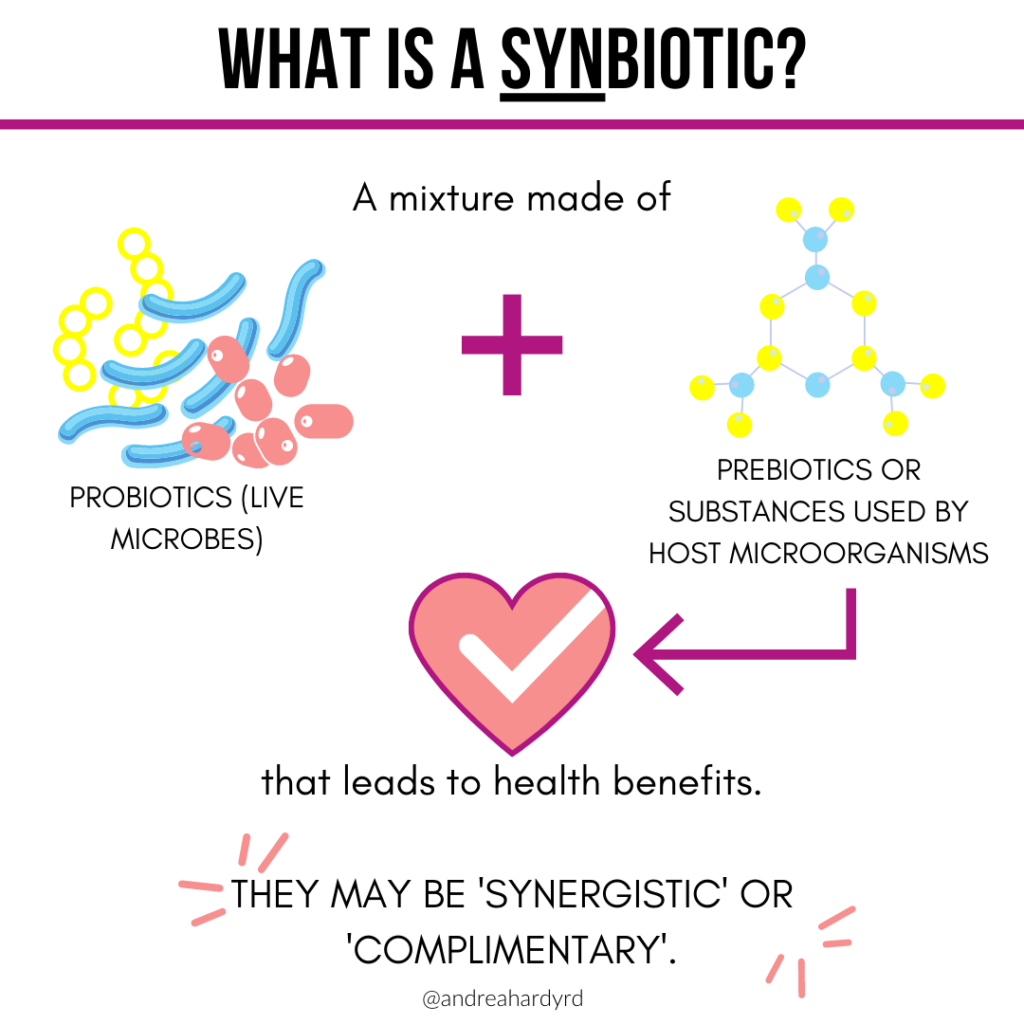
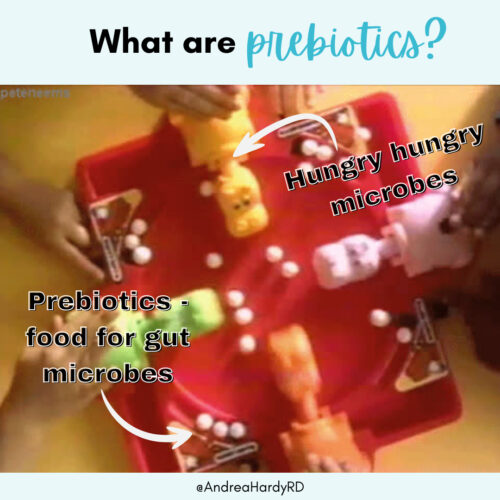
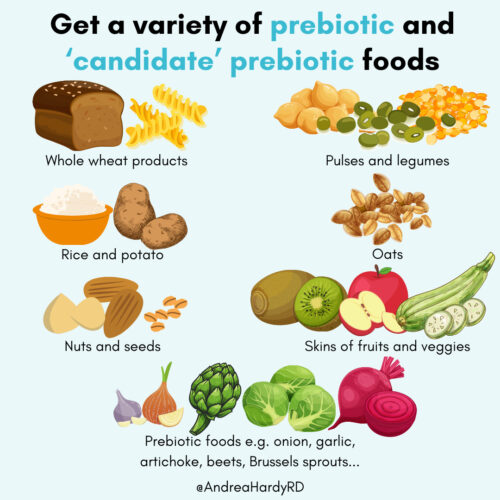
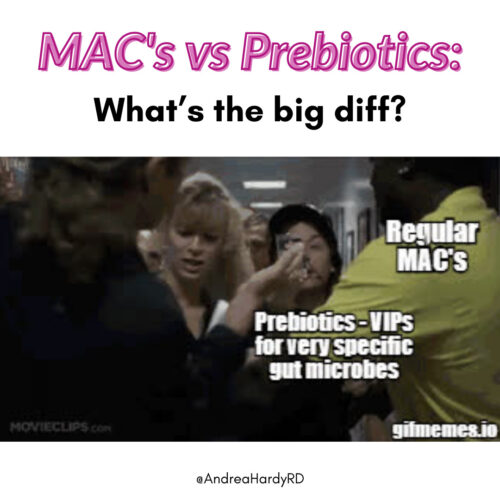
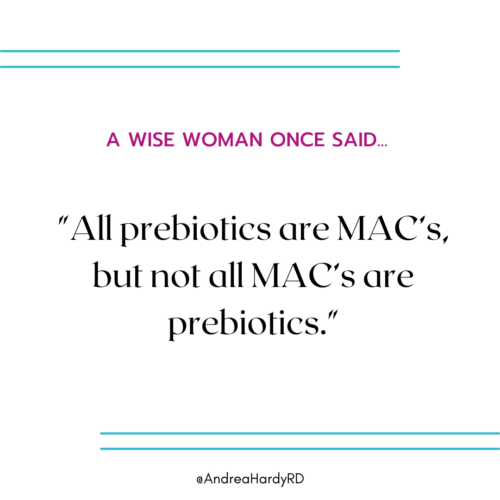
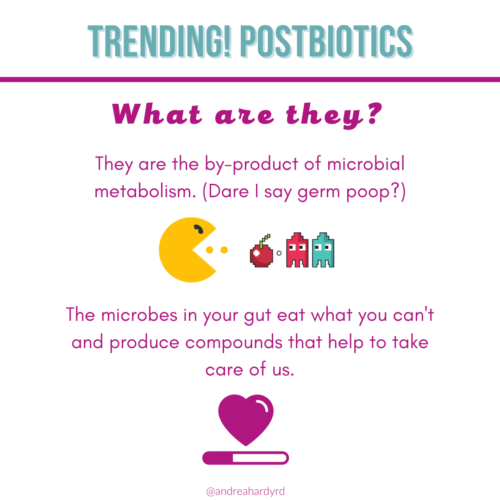
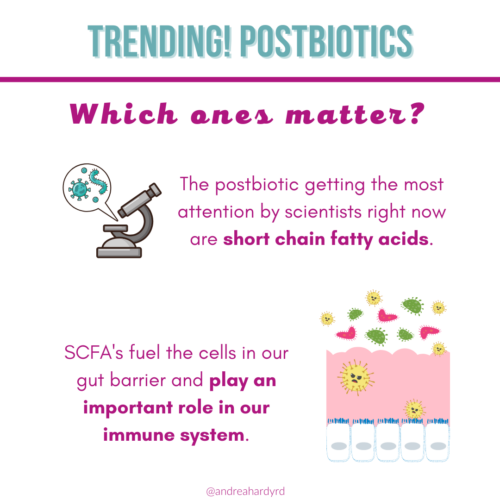
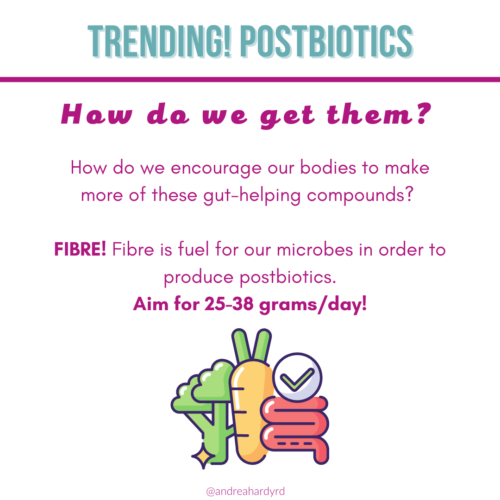

Recent Comments